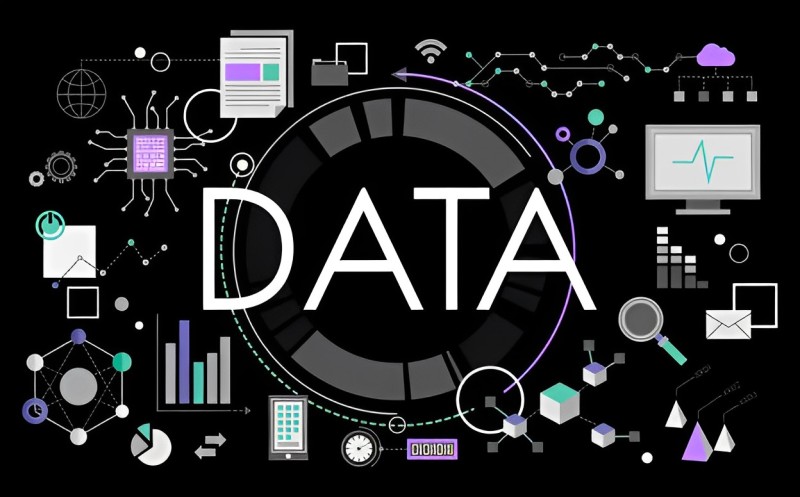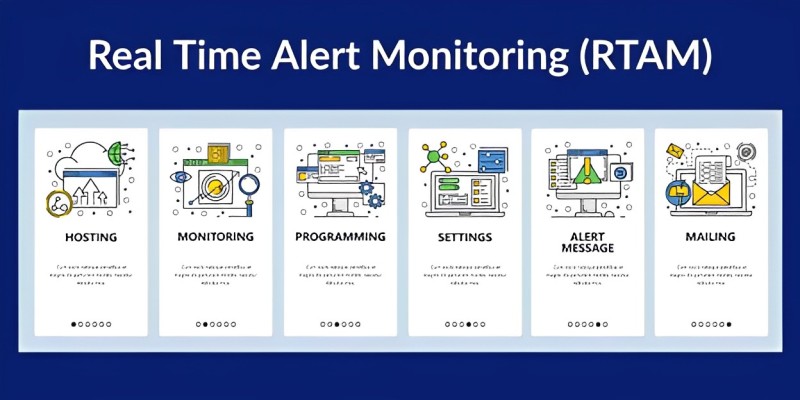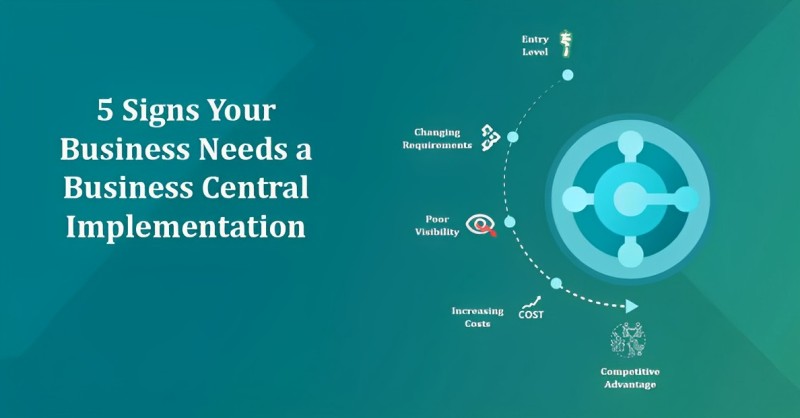
Business Central AL Code: Key Features Overview
Business Central is a powerful platform for managing all areas of a company’s operations.
However, without the necessary abilities for retrieving and evaluating information stored in Business Central solutions, its immense potential goes unfulfilled.
Let us unveil how developers can harness advanced AL coding techniques to unlock deep insights from Business Central data.
Like alchemists seeking to turn basic metals into gold, savvy coders can transform scattered data points into invaluable business intelligence to guide better decision-making.
Read on to master the art of conjuring enterprise magic with AL!
Analyzing Customer Buying Journeys
Understanding how customers interact across channels provides a foundation for many essential business decisions.
Cracking hidden details within sales patterns, marketing campaign responses and service inquiries equips companies to continually refine touchpoints to maximize conversion and loyalty.
Let’s explore approaches for extracting key details from Business Central data to reveal customer buying journeys.
- Build detailed customer profiles by joining tables like Contact, Customer, Segment, Interaction Log, and Sales Documents to incorporate demographics, behaviors, and transactions in unified views
- Analyze buying journeys by mapping entry points, purchases, service calls, and other breadcrumbs left across systems into visual map formats
- Tag and filter records to denote campaigns, channels, agents, and other affiliations to isolate the effectiveness of specific outreach efforts
AL code unlocks the power to spot subtle trends from customer data that inform strategies for the next best actions to cultivate ideal buyer pathways.
Operational Insights for Intelligent Forecasting
Streamlining supply chain and inventory processes hinges on quality forecasts to align production, staffing, and logistics with actual demand.
Crunching historical operational data gives vital context for projecting future needs. What Business Central analysis techniques can yield insights to optimize forecasting?
- Aggregate sales, returns, transfers, or adjustments over any period for trend analysis
- Compare budgets vs. actuals to fine-tune assumptions on business drivers
- Model seasonality by charting monthly or weekly patterns over past years
- Run Regression analysis to reveal effects of pricing, promotions, events
- Enrich with external data signals on market conditions, economics, or demographics
Proactive Issue Identification
Staying ahead of problems before they escalate helps organizations minimize disruptions.
Clever analysis of operational data using AL can uncover early warning signs in time to address root causes.
- Build monitoring dashboards with KPI thresholds that trigger alerts on abnormal metrics
- Data mine unstructured case or incident data to identify growing issues through text analysis
- Analyze known defects or returns data to guide improvement efforts on quality
- Spot inventory, capacity, or staffing gaps relative to sales trends to avoid shortages
- Model sales projections to compare with production schedules to highlight mismatches
Interactive Analysis with Power BI
Turning analysis into an iterative conversation directly between business users and their data accelerates discovering optimal solutions.
Blending AL and Power BI takes Business Central Implementation insights to the next level with interactive visualizations.
Some options to consider:
- Embed Power BI charts in pages for contextual insights
- Build reports in AL, export datasets to import into Power BI development services
- Expose AL data through APIs for Power BI to leverage
- Combine data from multiple systems for unified dashboard visualizations
- Parameterize reports for flexible filters to explore data dynamically
Predictive Analytics and Machine Learning

Advanced analytical approaches like machine learning open new possibilities for very precise forecasting from Business Central data.
Developers can build intelligent models offering data-driven guidance tailored to each organization’s unique patterns.
- Time series analysis predicts trends based on seasonality, economic factors, and other signals
- Classification algorithms dynamically segment customers or products into insightful groups
- Recommendation engines suggest the next best actions per business context like smart reminders
- Image recognition through computer vision modernizes processes leveraging visual data
Real-time Monitoring and Alerting

Static reporting alone fails to keep pace with the speed of modern business. Analyzing Business Central data in real-time enables identifying and responding to time-sensitive
Situations as they occur.
- Push notifications on urgent events to key stakeholders’ mobile devices
- Embed streaming visualizations in Business Central showing current KPI statuses
- Configure alerts when indicators breach acceptable thresholds
- Display dashboards centrally to foster a data-driven culture in physical facilities
Unified Data Warehouse and BI
Converging Business Central data with other systems in a unified analytics warehouse multiplies insights. Combining datasets exposes new correlations while eliminating reporting silos.
- Use Azure Data Factory to consolidate data from multiple apps and databases
- Take advantage of Dataverse as a centralized repository of cleansed Business Central data
- Build a Master Data Management strategy with shared dimensions like customers, products, etc.
- Expose unified data assets to Power BI consulting for organization-wide dashboards
Embedded BI and Analytics
Contextualizing analytics directly into business processes boosts data-driven decision-making. Various options exist for embedding interactive BI experiences natively into Business Central.
- Add Power BI Visualizations into key pages using standard embed controls
- Build SaaS apps with Azure Serverless to host solutions combining AL and Power BI
- Develop custom visuals using D3/WebCharts that unlock unique UX needs
- Expose data through APIs for blending with other systems on the front end
- Extend core objects like adding KPI field groups on top-level tables
External Data Enrichment
Looking beyond the walls of Business Central data opens new analytical dimensions. Augmenting internal data with relevant external signals provides a richer business context.
- Blend third-party demographic data into customer profiles for deeper segmentation
- Incorporate open economic or industry data feeds to improve situational analysis
- Exchange supply chain telemetry with partners to coordinate processes
- Make bias-free decisions leveraging ethical AI to guide fair, transparent analytics
Securing Analytical Assets
As analysis unlocks more business insights from data, properly securing analytical assets grows in importance.
Trust in data quality and availability becomes imperative.
Access controls that limit exposure while still enabling self-service help balance openness against risks like accidental deletion or modification.
- Audit logging provides transparency by tracking user activity, queries, exports, and API calls.
- Data encryption including both in-transit and at-rest secure crucial analytics databases and dashboards.
- Validation procedures like signature confirmation on critical exports or reports prevent tampering.
- Anonymization techniques mask direct identifiers in datasets where possible to protect privacy.
Strict separation of duties divides permissions so no single user holds too much privilege. E.g.: Analysts access data but only engineering teams can modify production.
Accelerating Time-to-Insight
Static reporting needs to work on meeting the modern pace.
Shortening the time from question to insight assists responsive decision-making. Various techniques help accelerate iterative data analysis.
Self-service analytics empower business users to obtain insights without ticket-based delays. Automated data refresh pipelines quickly propagate updates.
Analytics workspaces aid collaboration between technical and non-technical roles.
Metadata catalogs provide visibility into curated datasets while machine learning offers smart recommendations.
Natural language interfaces via voice or chatbots make querying intuitive. Instant visualizations reduce wait times.
Cloud-scale resources flexibly handle spikes in analysis workloads.
Overall solutions focus on empowering consumers of insights balanced against controls for creators of assets.
Automating Key Business Processes

Leveraging automation allows companies to optimize efficiency by reducing manual tasks and human errors.
AL developers can build bots and workflows to mimic employee actions for routine
Processes.
- Automate order entry by scraping data from emails or Excel sheets into sales documents
- Create a purchase order suggestion tool pulling historical data of inventory needs
- Build robotic process automation (RPA) to run periodic reconciliation jobs
- Schedule automated alerts and notifications based on data thresholds or events
- Implement chatbots to engage website visitors and collect lead information
External App Integrations
Centralizing data across technologies is key to maximizing business insights. Using built-in integration capabilities, AL developers can unlock multi-system analysis.
- Leverage Business Central APIs to exchange data with external programs
- Utilize Power Automate and Power Apps to build connections with popular SaaS platforms
- Create custom connectors to proprietary systems or unique data sources
- Design ETL routines to consolidate information from various databases
- Implement single sign-on and access management across applications
- Build data pipelines to move external information into native BC entities
Finally, AL development skills hold the key to unlocking deep insights from Business Central data.
High-value analysis that improves top and bottom-line outcomes gets enabled when data across business functions converges in intuitive formats.
What creative ways might you transform scattered data points into golden enterprise insights with AL? Please share your ideas below!



